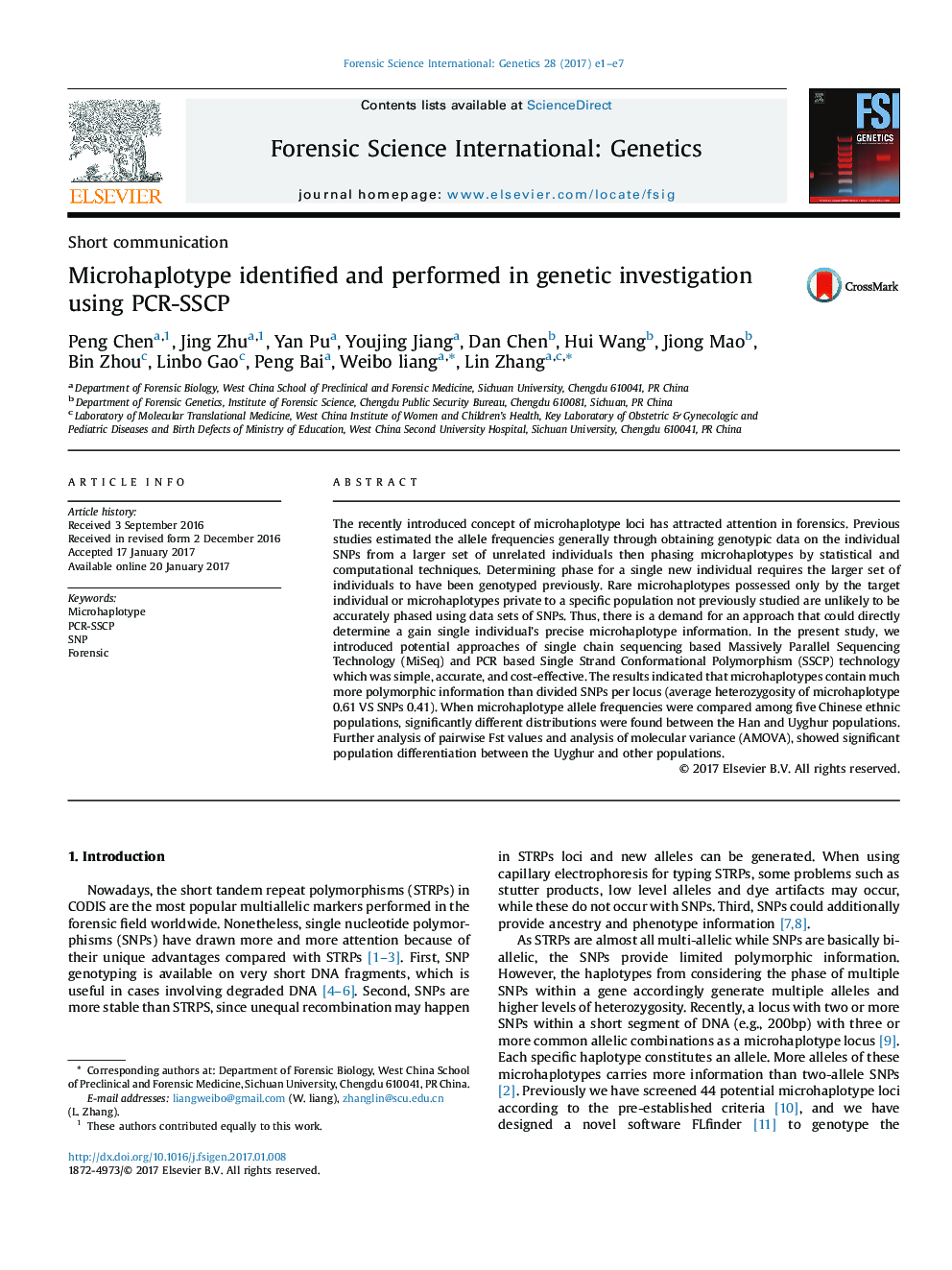| کد مقاله | کد نشریه | سال انتشار | مقاله انگلیسی | نسخه تمام متن |
|---|---|---|---|---|
| 6462847 | 1422150 | 2017 | 7 صفحه PDF | دانلود رایگان |

- We conducted a forensic population genetics investigation among five Chinese ethnical populations.
- The results suggested that microhaplotype could be more useful as personal identification than SNPs.
- Microhaplotype could be potential ancestry identify marker and also could be applied to kinship identification.
- In addition to the approach of single chain sequencing based massively parallel sequencing (MiSeq).
- We introduced a simple, accurate and cost-effective method of PCR-SSCP technology to genotype the microhaplotype.
The recently introduced concept of microhaplotype loci has attracted attention in forensics. Previous studies estimated the allele frequencies generally through obtaining genotypic data on the individual SNPs from a larger set of unrelated individuals then phasing microhaplotypes by statistical and computational techniques. Determining phase for a single new individual requires the larger set of individuals to have been genotyped previously. Rare microhaplotypes possessed only by the target individual or microhaplotypes private to a specific population not previously studied are unlikely to be accurately phased using data sets of SNPs. Thus, there is a demand for an approach that could directly determine a gain single individual's precise microhaplotype information. In the present study, we introduced potential approaches of single chain sequencing based Massively Parallel Sequencing Technology (MiSeq) and PCR based Single Strand Conformational Polymorphism (SSCP) technology which was simple, accurate, and cost-effective. The results indicated that microhaplotypes contain much more polymorphic information than divided SNPs per locus (average heterozygosity of microhaplotype 0.61 VS SNPs 0.41). When microhaplotype allele frequencies were compared among five Chinese ethnic populations, significantly different distributions were found between the Han and Uyghur populations. Further analysis of pairwise Fst values and analysis of molecular variance (AMOVA), showed significant population differentiation between the Uyghur and other populations.
Journal: Forensic Science International: Genetics - Volume 28, May 2017, Pages e1-e7